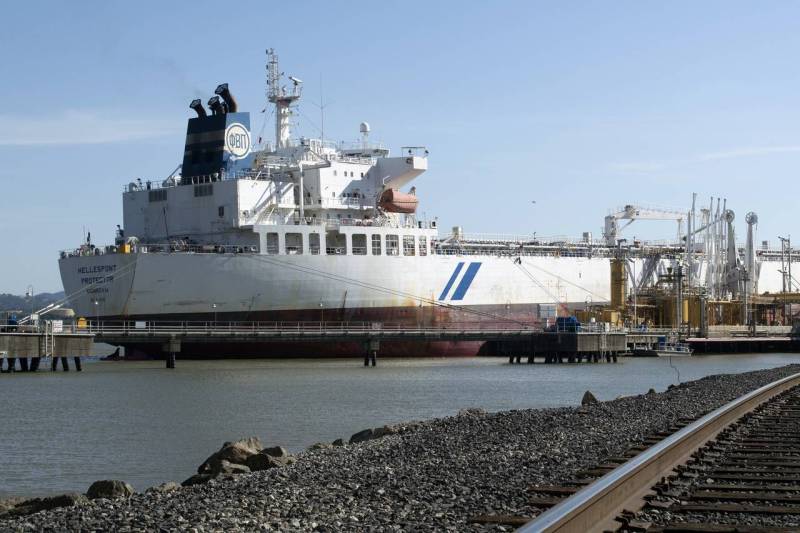Washington: The oil-tanker market is heating up, a development some analysts say is a warning flare that signals further price declines for crude.
The Baltic Dirty Tanker Index, which tracks the rates to hire oil tankers plying 16 routes, has shot up 25% this month, as global oil output continues to grow. The index is now at its highest level since January 2014.
But an increasing number of these oil cargoes have nowhere to go. Oil producers and traders are rushing to lease tankers while they scramble to find buyers, effectively turning these ships into floating storage facilities. The oil-supply glut has worsened since the Organization of the Petroleum Exporting Countries earlier this month decided to maintain crude-output levels.
A recent rebound in oil prices has stalled amid copious supplies world-wide, and many market watchers are bracing for the resumption of a selloff that sent Brent crude, the global benchmark, tumbling to a six-year low in January. On Thursday, Brent fell 29 cents, or 0.5%, to $63.20 a barrel. A year ago, a barrel was $114.
“There’s a lot of crude oil that’s trying to find a home, so that’s good for the tanker market,” said Olivier Jakob, managing director of Petromatrix, a consulting firm based in Zug, Switzerland. But “that limits the potential for a crude-oil rally and puts pressure on the price.”
Ships also are embarking on longer voyages than in past years, as sellers go farther afield to find buyers. That means fewer ships are available at any one time, which also has contributed to the upward pressure on tanker rates.
Nigeria is proceeding with monthly tanker loadings even when cargoes from previous months’ auctions remain unsold, according to Morgan Stanley. Meanwhile, vessels recently chartered by a state-owned company in China and trading house Vitol Inc. are being used to store crude at sea on so-called Very Large Crude Carriers, which hold up to two million barrels of oil, according to shipping records and data from Thomson Reuters.
Almost 55 million barrels were stored on tankers last week, more than double the amount in January, according to Thomson Reuters. “The abundance of crude in the world has created some distressed cargoes,” said Erik Broekhuizen, head of tanker research at marine brokerage Poten & Partners. “In effect, they’re using tankers to store crude because they can’t find buyers.”
Oil traders earlier this year capitalized on the bounce in oil prices by selling crude that had been locked up in storage arrangements for months. But much of that oil ended up in onshore facilities or remained at sea without an end user, according to a June 23 note from research firm Energy Aspects.
Some analysts say an uptick in global demand is behind the rise in tanker rates, which can be seen as bullish—rather than bearish—for crude prices. U.S. refiners are running near maximum capacity to produce gasoline for drivers who are hitting the road for summer vacation. And China, the world’s largest oil consumer after the U.S., has been stockpiling crude for its strategic reserves.
But many analysts and traders say those factors are fleeting.
Another threat to tanker rates, independent of the oil market, is the industry’s tendency to quickly bring in new ships when rates are high. During the 2009 global recession, the combination of increased shipping capacity and slumping demand sent rates down nearly 80% in nine months, to the lowest levels ever registered by the index, which dates to the late 1990s. Euronav NV, an operator of more than 60 tankers based in Antwerp, Belgium, earlier this month agreed to buy up to eight new tankers for nearly $800 million, though it was careful to say the ships were already under construction and headed to market when it made the purchase, rather than adding further new capacity with fresh orders.
For now, though, investors are betting the good times for tanker operators will continue. Share prices for some of the world’s major tanker players have surged amid strong first-quarter earnings. Euronav, Teekay Tankers Ltd. and Tsakos Energy Navigation Ltd. are among the companies whose shares have hit multiyear highs recently.
“Tankers are making serious money, in what’s turning into the best tanker market since 2008,” Wells Fargo analyst Michael Webber said.
Janus Capital Management increased its holdings in Euronav, the largest fleet operator in the industry, by more than 40% in the first quarter, the most recent period for which records are available. York Capital Management LLC, a $27 billion hedge-fund firm, boosted its stake in Scorpio Tankers Inc., based in Monaco, to 9.1% at the end of March, from 5.5% last June. Shares of Scorpio are up 16% this year.
“The market has been so bad for so long,” said Adam Berger, portfolio manager for oil and gas holdings at $200 million hedge-fund firm Cougar Trading LLC, referring to tanker rates. The fund held a position in Bermuda-based Teekay Tankers as of its most recent filing. “Right now, the tailwinds seem to be getting better and better.”
But an upbeat view on the tanker market is a red flag for oil prices, analysts say.
“The disconnect between the markets is at unprecedented levels, and something has to give,” analysts at Energy Aspects wrote.
Courtesy Wall Street Journal






